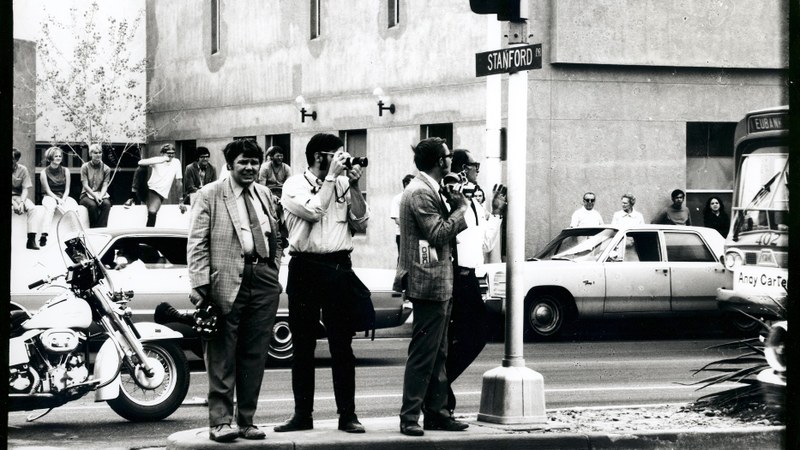
Albuquerque Museum Announces News for the People: Local Journalism in the 1970s
An exhibition analyzing how journalism informs and protects democracy.
The Albuquerque Museum proudly presents News for the People: Local Journalism in the 1970s on view at the Albuquerque Museum August 12 to March 3, 2024. The exhibition explores the significance and process of journalism in the 1970s in Albuquerque and the surrounding areas and how it differed from the national media.
News for the People analyzes how journalists created stories and how newspaper, radio, and television outlets reported on and reacted to the most important social issues of the 1970s. New Mexico’s rich tradition of reporting on local issues is showcased in a visual timeline, ranging from early newspapers that covered the state's territorial period to newsrooms that focused on developments in politics, culture, and society. As the primary source of information for many people in the state, journalists have played an important role in shaping public opinion and keeping people informed.
The exhibition draws heavily from the museum’s collection of historical objects and includes items borrowed from New Mexico Press Women, Albuquerque Public Library’s Special Collections Branch, the Center for Southwest Research at UNM, and the personal collections of journalists who were an integral part of the research that shaped the exhibition. Representing the most important themes in journalism to the local community more than 50 years ago, the objects in the exhibition identify not only how news reporting has physically changed in appearance through technological advances but also targeted important social issues during the 1970s. The newspaper publications, newsreels, typewriters, and photographs of protests and journalists in the exhibition showcase how news shaped the perception of the local community and indicated how the public received their news. The content and stories from people involved, provide a glimpse into the pioneers of these forms of media that shifted in the 1970s to include more female and Indigenous voices.
“Since its inception Albuquerque Museum has preserved historic documents and objects that represent the concerns of the local community,” said Andrew Connors, Albuquerque Museum director. “Utilizing objects from our collection, our curators shine a light on the important role that public news reporting has had not only in Albuquerque, but the country as a whole.”
Significant events challenged the local population’s ability to spread messages freely through the media. One such example is the University of New Mexico Riot of 1970 where the National Guard bayoneted reporters and bystanders in a crowd of Vietnam War protesters while KUNM reported live from their station trapped in a building on campus. This was an example of how informed citizens are central to democracy: a theme that continues to this day.
Free speech and access to information are essential for journalism to thrive. Alternative forms of media such as Wassaja, Seers Catalogue, and El Grito del Norte published printed material covering topics in local communities that the major media corporations were overlooking. Local journalists informed the public about protest movements that shaped the social and political landscape of New Mexico during that era, while the growth of the Chicano Movement, Women’s Liberation Movement, and increased awareness of Indigenous perspectives, forced journalists across New Mexico to re-examine their ethical standards.
Reporting news to the public has always been essential for democracy as it provides citizens with accurate and reliable information, facilitates public discourse, and holds those in power accountable for their actions. The determination displayed by the creators, producers, editors, and consumers of journalism ensured that the news remained for the people.
